
The Dean Cemetery is a historically important Victorian cemetery north of the Dean Village, west of Edinburgh city centre, in Scotland. It lies between Queensferry Road and the Water of Leith, bounded on its east side by Dean Path and on its west by the Dean Gallery. A 20th-century extension lies detached from the main cemetery to the north of Ravelston Terrace. The main cemetery is accessible through the main gate on its east side, through a "grace and favour" access door from the grounds of Dean Gallery and from Ravelston Terrace. The modern extension is only accessible at the junction of Dean Path and Queensferry Road.
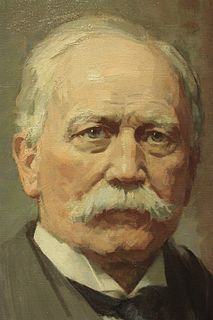
Sir Robert Rowand Anderson, was a Scottish Victorian architect. Anderson trained in the office of George Gilbert Scott in London before setting up his own practice in Edinburgh in 1860. During the 1860s his main work was small churches in the 'First Pointed' style that is characteristic of Scott's former assistants. By 1880 his practice was designing some of the most prestigious public and private buildings in Scotland.
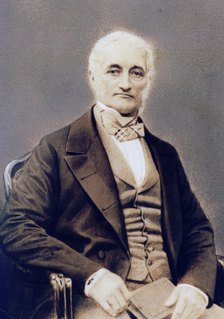
William Burn was a Scottish architect. He received major commissions from the age of 20 until his death at 81. He built in many styles and was a pioneer of the Scottish Baronial Revival.

Hippolyte Jean Blanc was a Scottish architect. Best known for his church buildings in the Gothic revival style, Blanc was also a keen antiquarian who oversaw meticulously researched restoration projects.
Sir George Aitken Clark Hutchison was an advocate mainly remembered in his role as a politician as a Scottish Unionist who served as the Member of Parliament for Midlothian and Peebles Northern from 1922 to 1923, and from 1924 until his death.
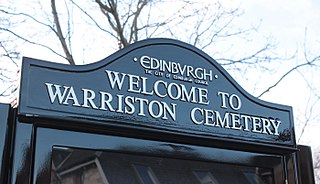
Warriston Cemetery is a cemetery in Edinburgh. It lies in Warriston, one of the northern suburbs of Edinburgh, Scotland. It was built by the then newly-formed Edinburgh Cemetery Company, and occupies around 14 acres (5.7 ha) of land on a slightly sloping site. It contains many tens of thousands of graves, including notable Victorian and Edwardian figures, the most eminent being the physician Sir James Young Simpson.

John Lessels was a Scottish architect and artist, notably active in Edinburgh and also the Scottish Borders.

Rosebank Cemetery is a 19th-century cemetery in Edinburgh. It is located at the junction of Pilrig Street and Broughton Road in the Pilrig area, close to the historical boundary of Leith. The cemetery is protected as a category C listed building.

Robert Morham was the City Architect for Edinburgh for the last decades of the nineteenth century and was responsible for much of the “public face” of the city at the time.

Frank Lewis Worthington Simon was a British architect working in the Arts and Crafts style. In Scotland, he was sufficiently noteworthy as to be commissioned by Queen Victoria to remodel Balmoral Castle In later life he worked in Canada and is best remembered for the Manitoba Legislative Building.

Archibald Campbell Douglas was a Scottish architect based primarily in Glasgow. He designed many churches in Glasgow and Edinburgh, especially those for the Free Church of Scotland.

Charles George Hood Kinnear FRIBA ARSA FRSE was one half of Peddie & Kinnear, one of Scotland’s most renowned and prodigious architectural firms, famed for their development of the Scots Baronial style, typified by Cockburn Street in Edinburgh which evokes a highly medieval atmosphere. Kinnear was also a pioneer photographer credited with inventing the bellows attachment on early cameras.

Henry Hardy was a Scottish architect operational in the late 19th century and principal partner of the firm Hardy & Wight. He was also a member of the Royal Scottish Academy as an accomplished landscape artist. He was involved in various City Improvement Schemes in Edinburgh including George IV Bridge and Johnston Terrace and also specialised in church design.

John Starforth (1822-1898) was an English-born architect and architectural author associated solely with work in Scotland, mainly working in Lothian, Dumfries & Galloway, and the Scottish Borders.
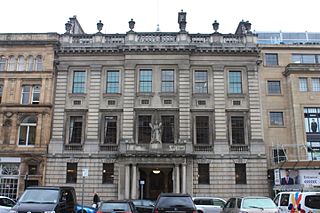
Alexander Hunter Crawford (1865–1945) was a Scottish architect and businessman. Closely associated with his father's firm of Crawford's Biscuits he designed many biscuit factories, and became owner of the company in 1931. Many of his villas are now listed buildings. His masterpiece is probably the huge Masonic Lodge on George Street in Edinburgh.
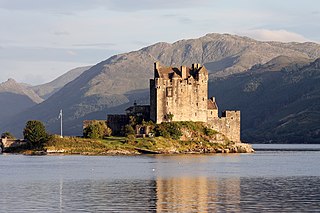
George Mackie Watson RIBA (1860-1948) was a Scottish architect in the late 19th and early 20th centuries. He trained in the offices of Robert Rowand Anderson, and was responsible for the design and reconstruction of several churches. From 1912 to 1932 he was involved in the total rebuilding of Eilean Donan Castle on the west coast of Scotland, for John Macrae-Gilstrap.
David Robertson ARSA FRIBA (1834-1925) was a Scottish architect and artist. He was three times President of the Edinburgh Architectural Association.

Robert Paterson (1825–1889) was a 19th-century Scottish architect. His most famous work is the Cafe Royal in Edinburgh. Almost all his works are in Edinburgh, mainly in the Scots Baronial style, including a number of churches for the United Presbyterian Church.

James Graham Fairley FRIBA MSGS (1846–1934) was a 19th/20th century Scottish architect working mainly in the West Lothian area, specialising in churches and schools.

James Simpson (1830–1894) was a 19th century Scottish architect. He is particularly associated with Leith. He served as the Burgh Assessor and Town Architect of Leith and created and oversaw the Leith Improvement Plan of 1888.




















